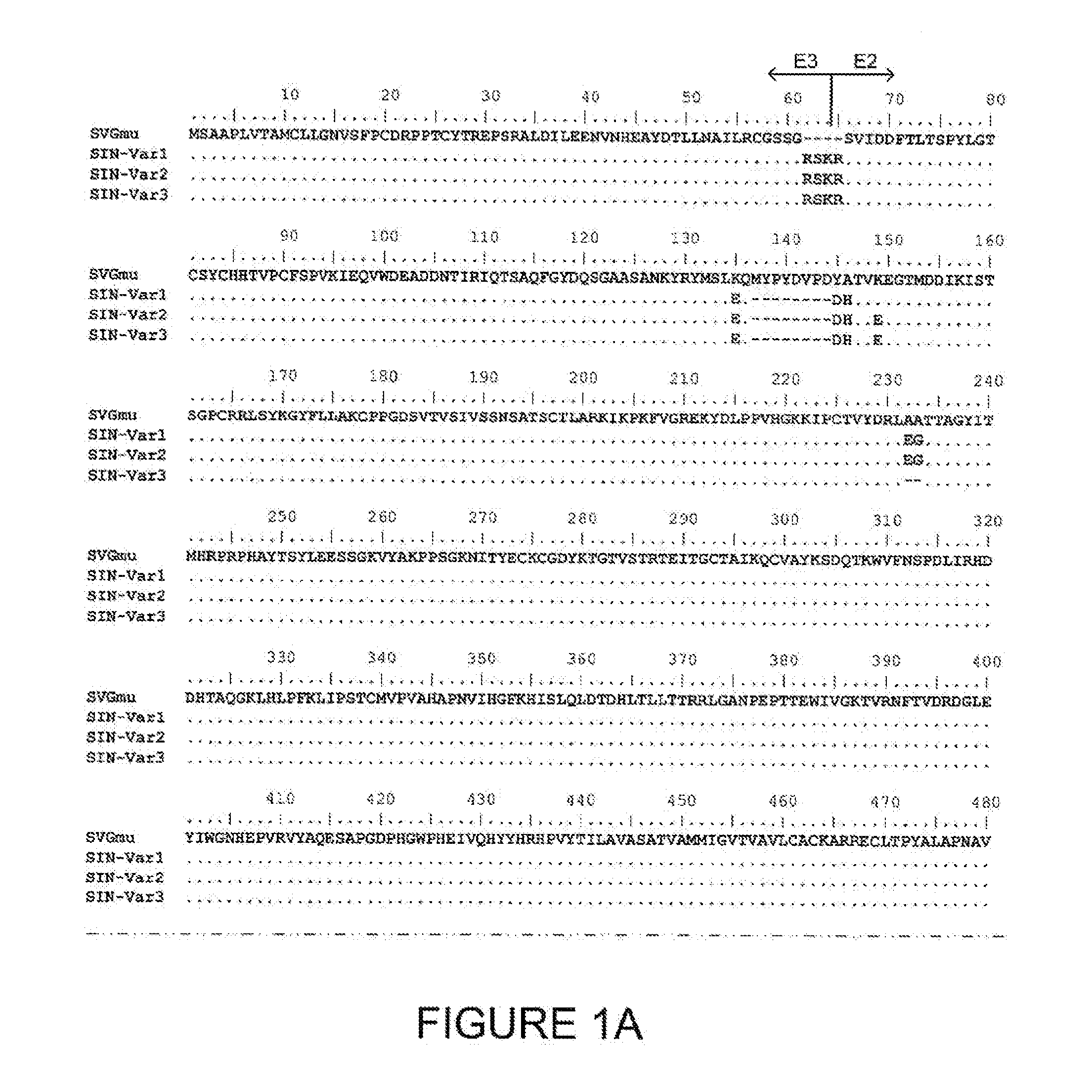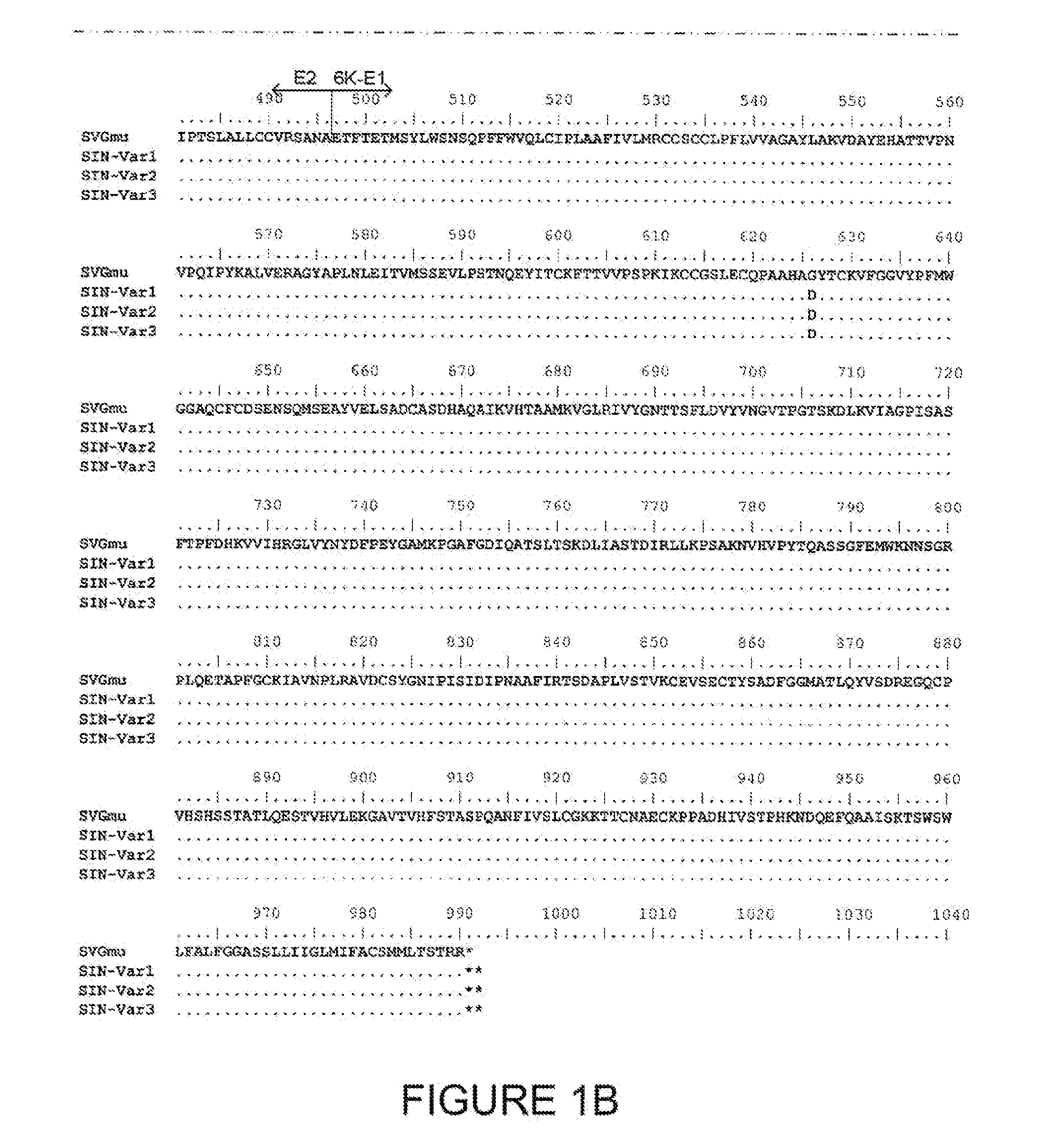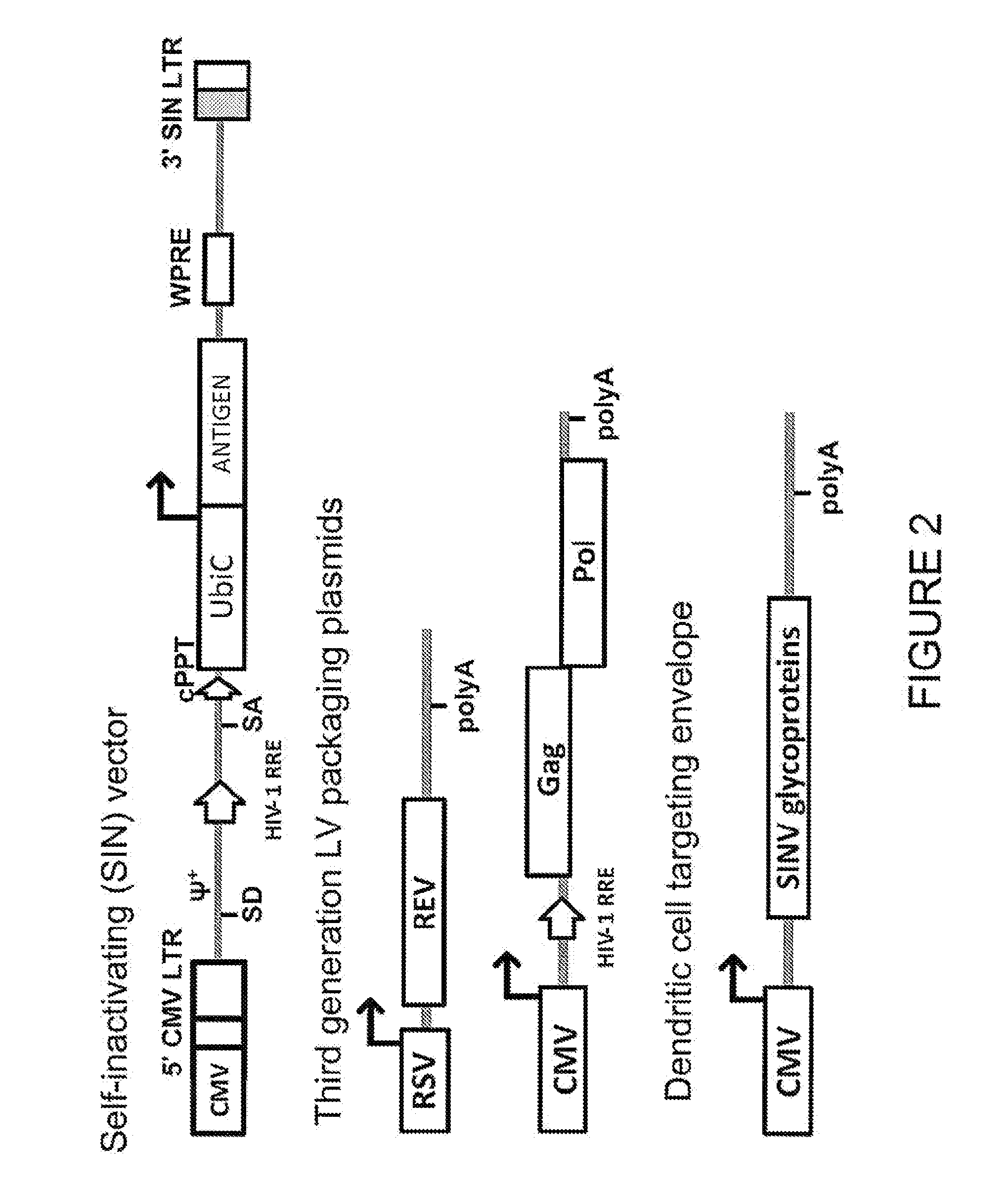Lentiviral vectors pseudotyped with a sindbis virus envelope glycoprotein
a lentiviral vector and envelope glycoprotein technology, applied in the field of targeted gene delivery, can solve the problems of svgmu, unsuitable for therapeutic use, severe attenuation of mouse pathogenicity, and poor growth of permissive cell lines, and achieve the effect of facilitating infection of dendritic cells
- Summary
- Abstract
- Description
- Claims
- Application Information
AI Technical Summary
Benefits of technology
Problems solved by technology
Method used
Image
Examples
example 1
Engineering of a Sindbis Virus Envelope Variant
Sindbis virus (SV)—a member of the Alphavirus genus and the Togaviridae family—is able to infect DCs, probably through DC-SIGN (Klimstra, W. B., et al. 2003. J. Virol. 77: 12022-12032, which is incorporated herein by reference in its entirety). The canonical viral receptor for the laboratory strain of SV however, is cell-surface heparan sulfate (HS), which is found on many cell types (Strauss, J. H., et al. 1994. Arch. Virol. 9: 473-484; Byrnes, A. P., and D. E. Griffin. 1998. J. Virol. 72: 7349-7356, each of which is incorporated herein by reference in its entirety). To try to reduce heparan sulfate binding, a mutant E2 envelope (called SVGmu) was constructed by Wang et al. (US 2008 / 0019998, incorporated in its entirety). Part of their strategy involved deleting four amino acids at the E3 / E2 pro-protein junction and a deletion of two amino acids with a subsequent addition of a 10 amino acid sequence from hemagglutinin (see FIGS. 1A and...
example 2
Preparation of a Viral Vector Particle Comprising
A Sindbis Virus E2 Envelope Glycoprotein Variant
A Sindbis envelope-pseudotyped virus is prepared by standard calcium phosphate-mediated transient transfection of 293T cells with a lentiviral vector, such as FUGW or its derivatives, packaging plasmids encoding gag, pol and rev, and a variant Sindbis virus envelope sequence. FUGW is a self-inactivating lentiviral vector carrying the human ubiquitin-C promoter to drive the expression of a GFP reporter gene (Lois, C., et al. 2002. Science 295: 868-872, which is incorporated herein by reference in its entirety). The lentiviral transfer vectors (FUGW and its derivatives) are third generation HIV-based lentiviral vectors (see generally, Cockrell and Kafri Mol. Biotechnol. 36: 184, 2007), in which most of the U3 region of the 3′ LTR is deleted, resulting in a self-inactivating 3′-LTR.
Production of recombinant lentivirus vectors was accomplished by calcium phosphate (CaPO4)-mediated transient ...
example 3
Production of Lentiviral Vector Particles Comprising Sindbis Virus Envelope Glycoproteins
In this example, titers are determined for lentivirus vectors pseudotyped with different Sindbis virus envelopes. The E2 glycoproteins used were those contained in the sequences SIN-Var1 (SEQ ID No. 3), SIN-Var2 (SEQ ID No. 4), SIN-Var3 (SEQ ID No. 5), SVGmu (SEQ ID No. 2), HR (SEQ ID No. 18).
Sindbis virus glycoprotein pseudotyped lentiviral vector particles were generated by transfection of 293T cells as described in Example 2. Crude supernatants were harvested 48 hours post-transfection and used to transduce 293T cells expressing human DC-SIGN (293-DCSIGN) that had been plated in 6-well dishes the previous day at 2E5 cells / well. Titer was determined following a 72 hr incubation at 37° C. by analyzing transduced cells on a Guava Easy-Cyte cytometer (Millipore). 25,000 total events were counted to determine the percentage of GFP+ transduced cells, which was in turn used to calculate the GFP tite...
PUM
| Property | Measurement | Unit |
|---|---|---|
| Electric charge | aaaaa | aaaaa |
| Acidity | aaaaa | aaaaa |
Abstract
Description
Claims
Application Information
 Login to View More
Login to View More - R&D
- Intellectual Property
- Life Sciences
- Materials
- Tech Scout
- Unparalleled Data Quality
- Higher Quality Content
- 60% Fewer Hallucinations
Browse by: Latest US Patents, China's latest patents, Technical Efficacy Thesaurus, Application Domain, Technology Topic, Popular Technical Reports.
© 2025 PatSnap. All rights reserved.Legal|Privacy policy|Modern Slavery Act Transparency Statement|Sitemap|About US| Contact US: help@patsnap.com



